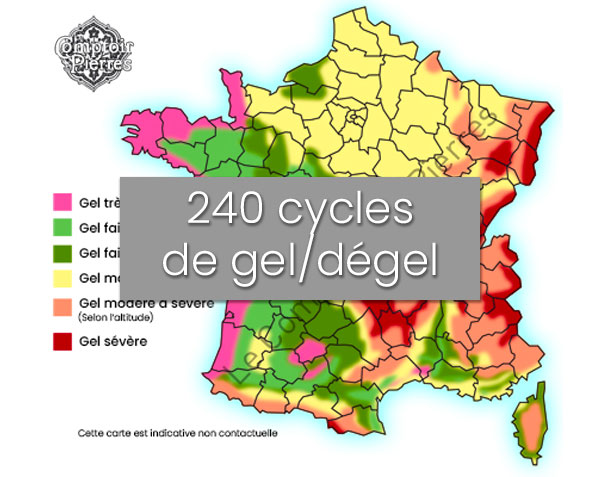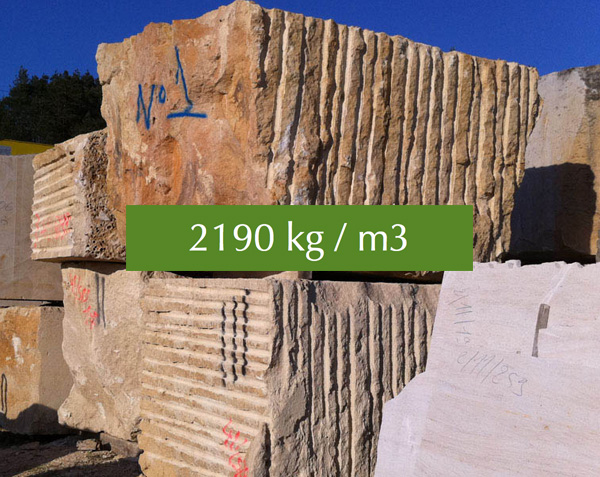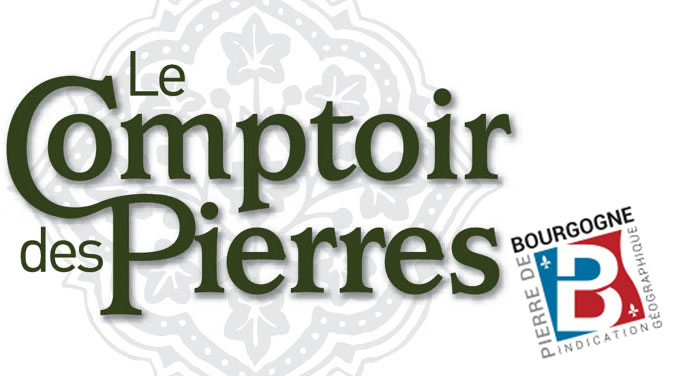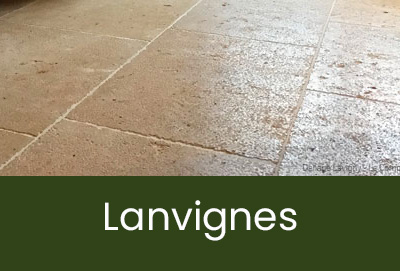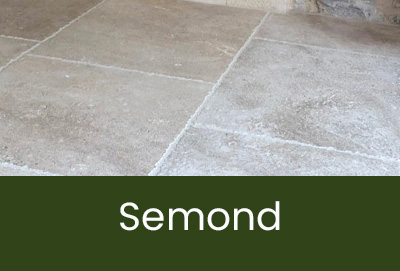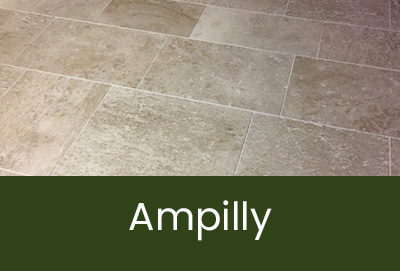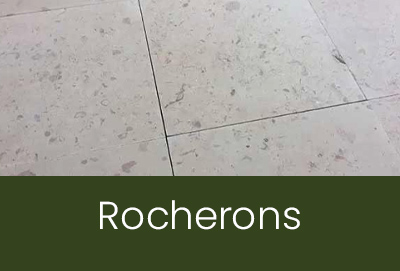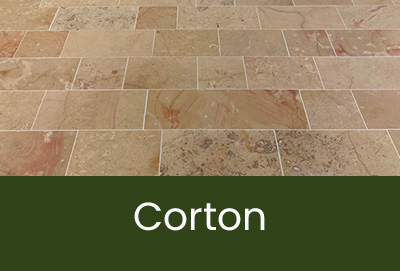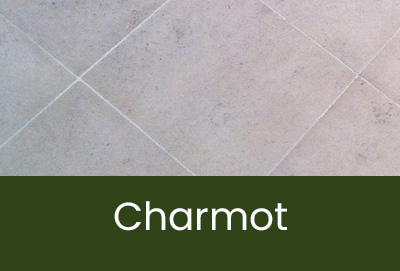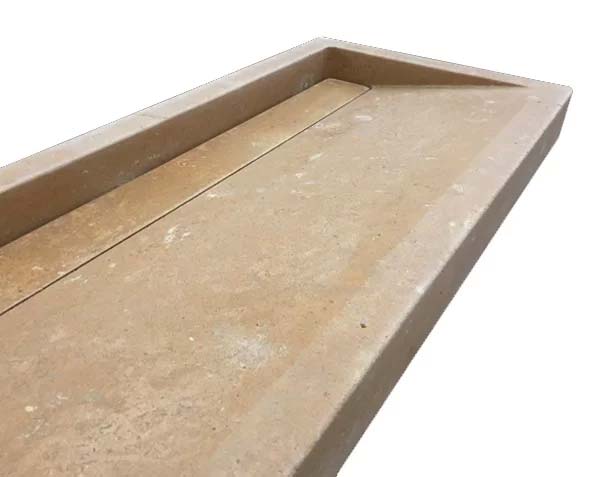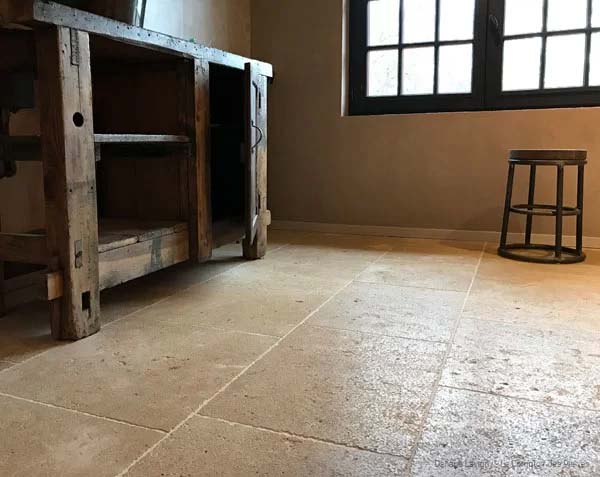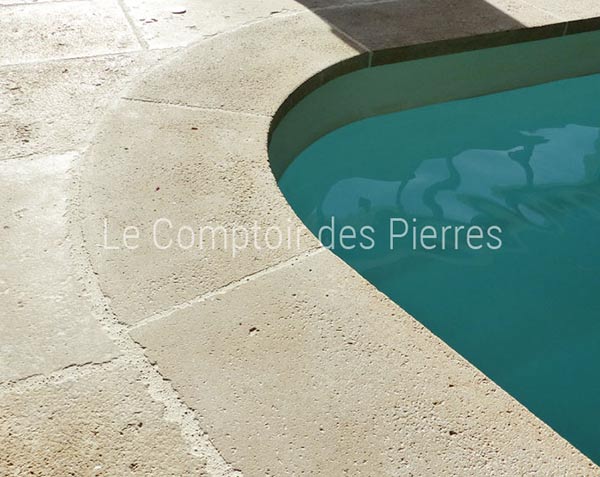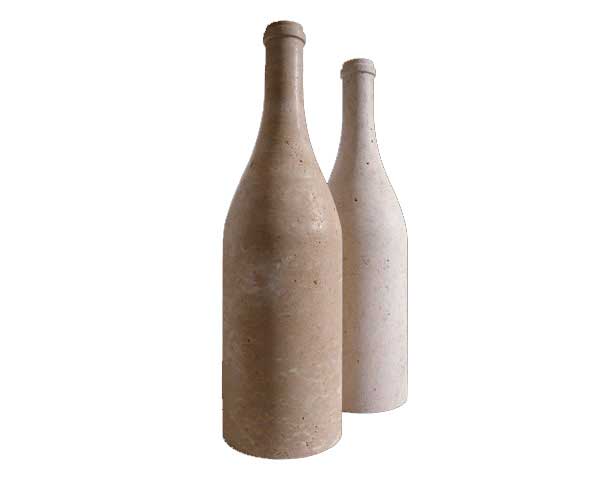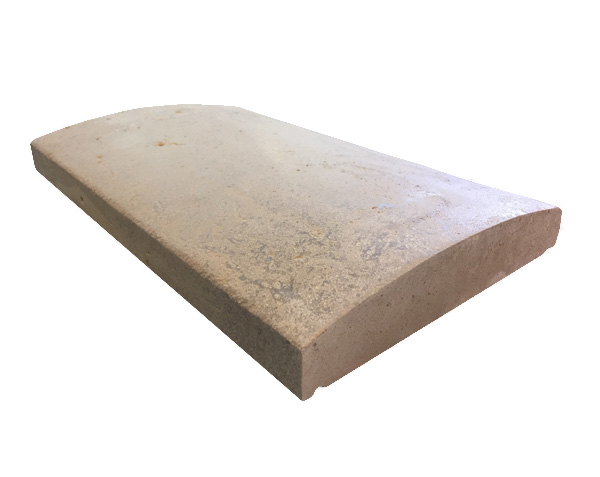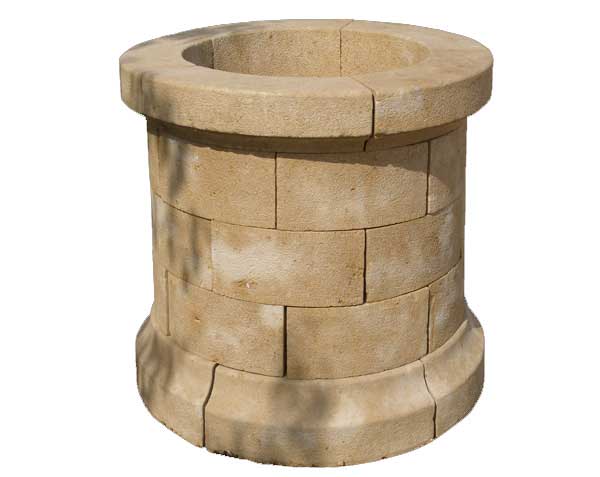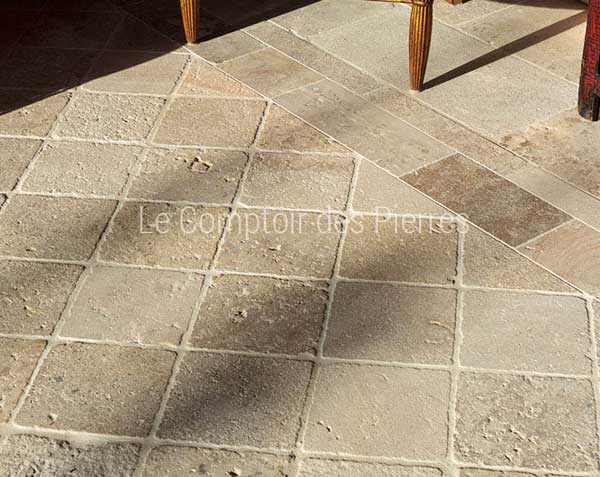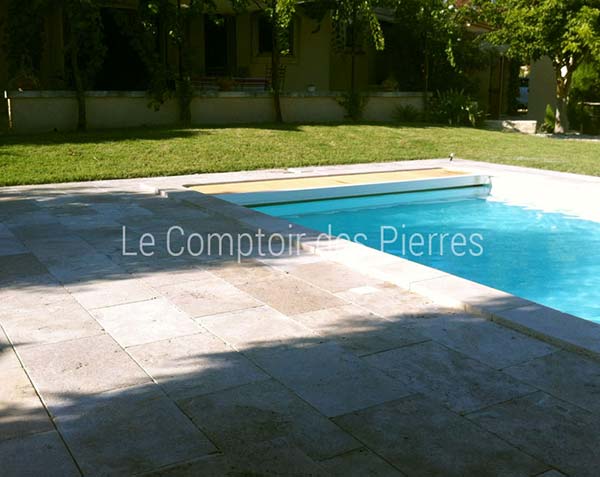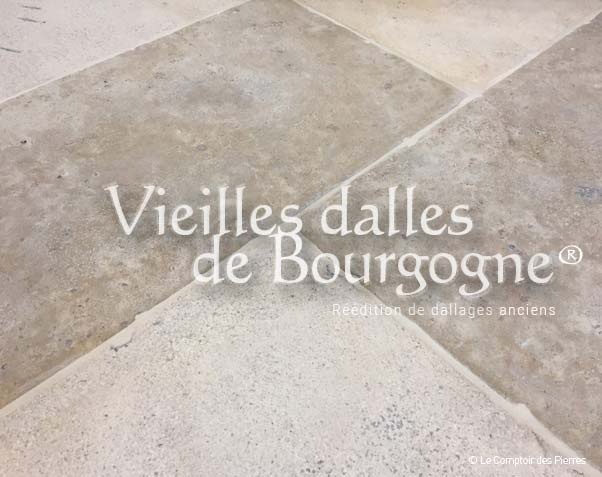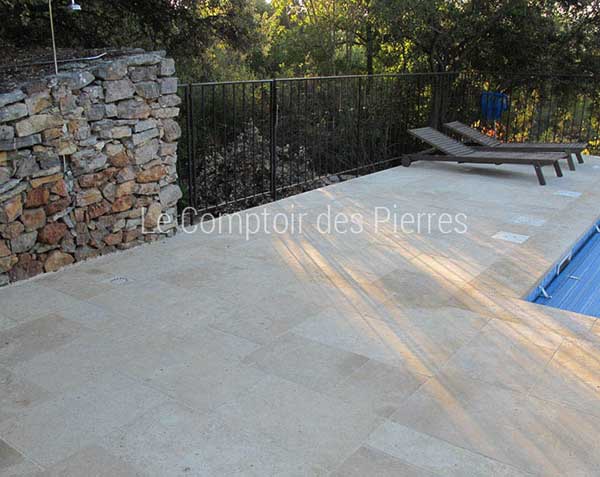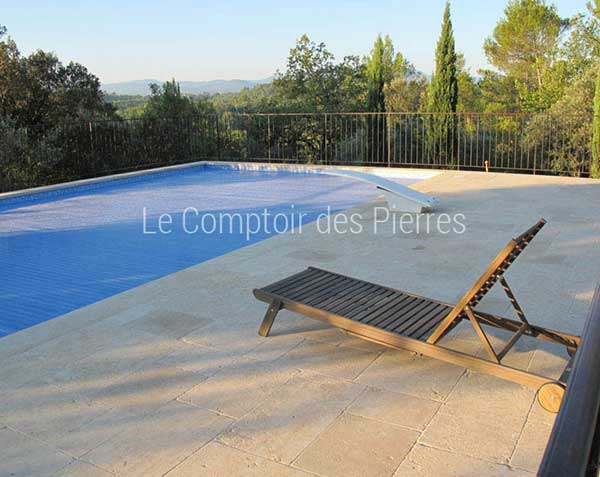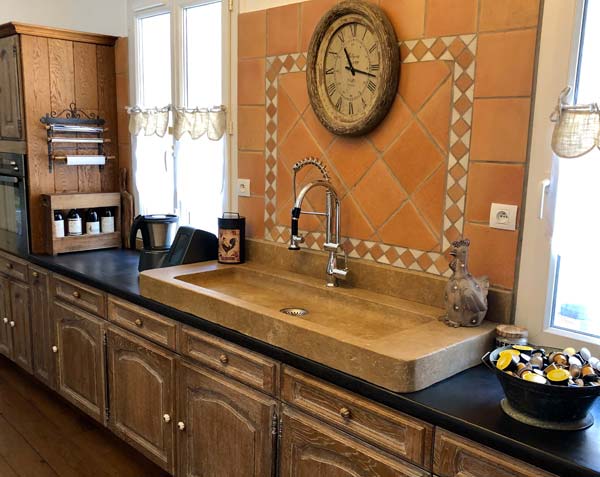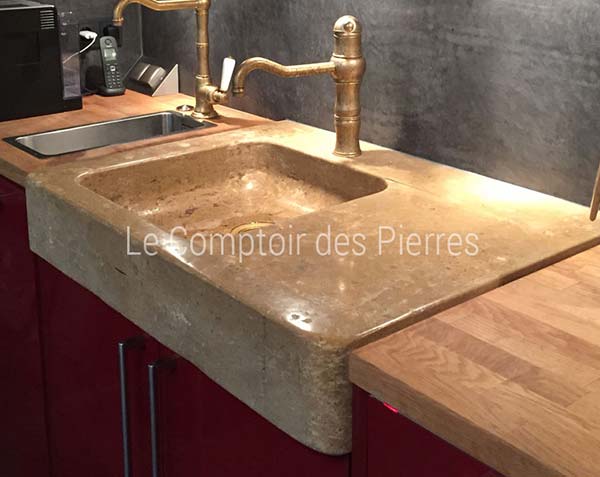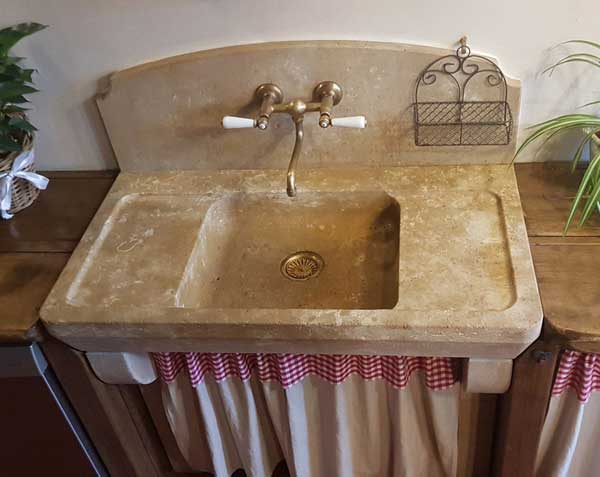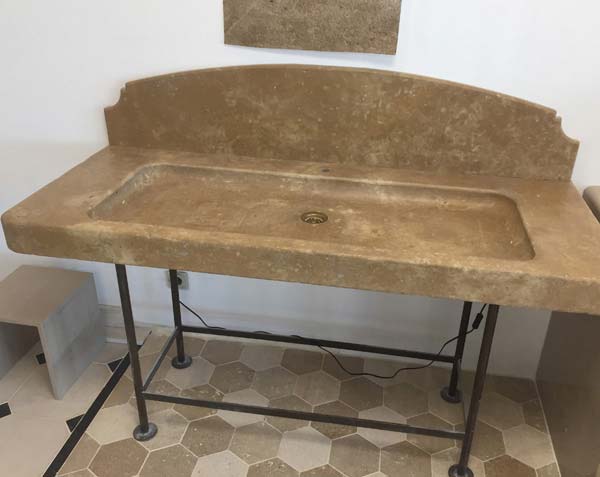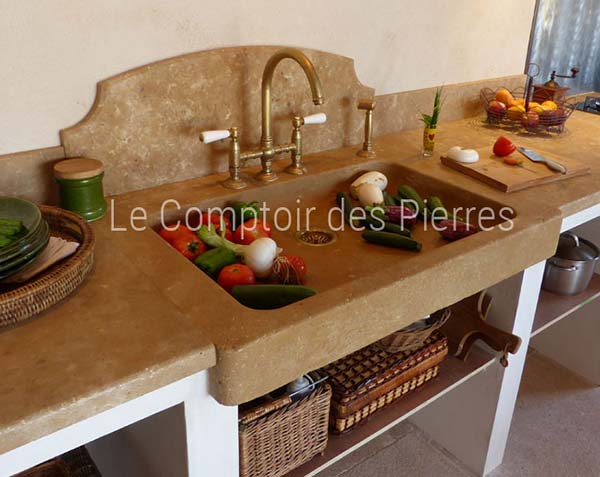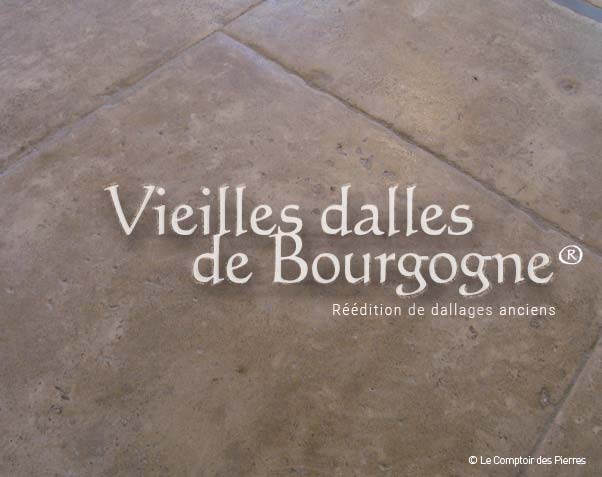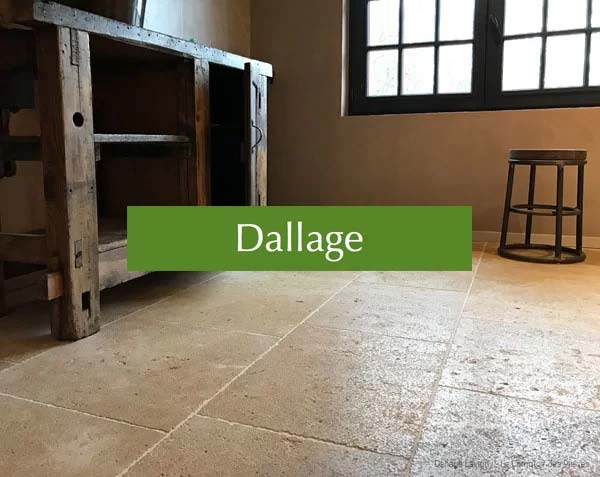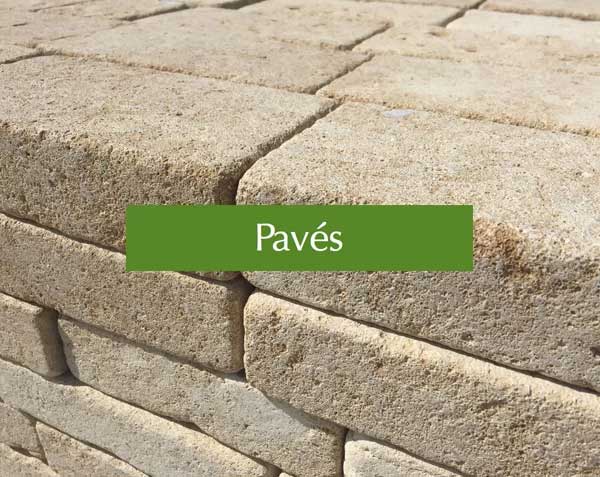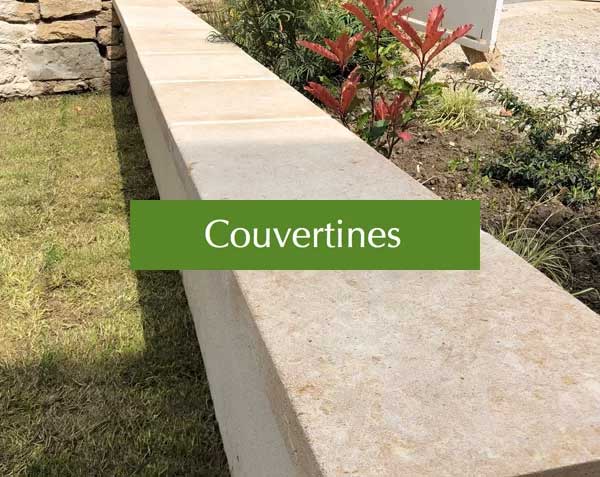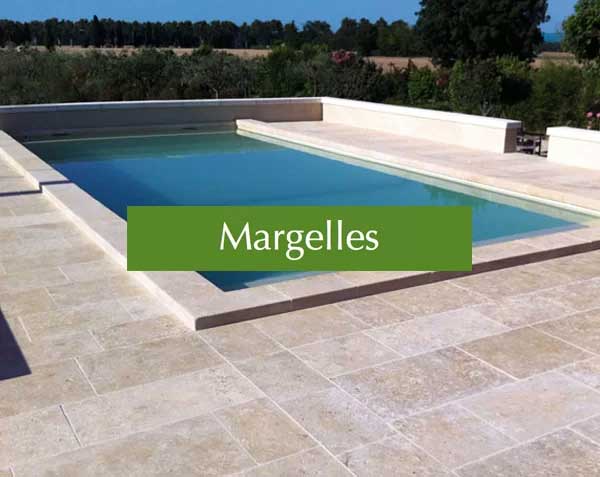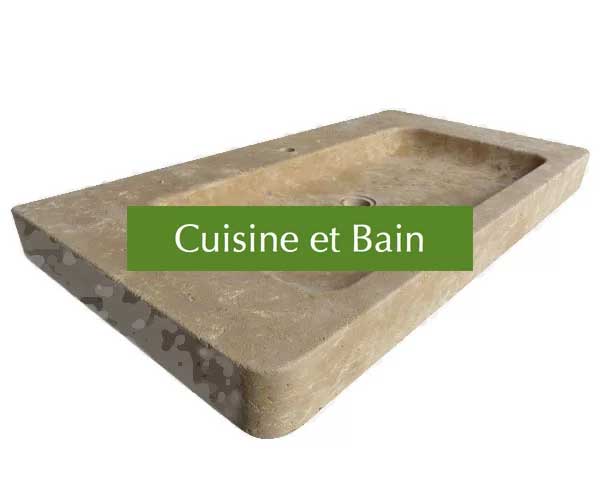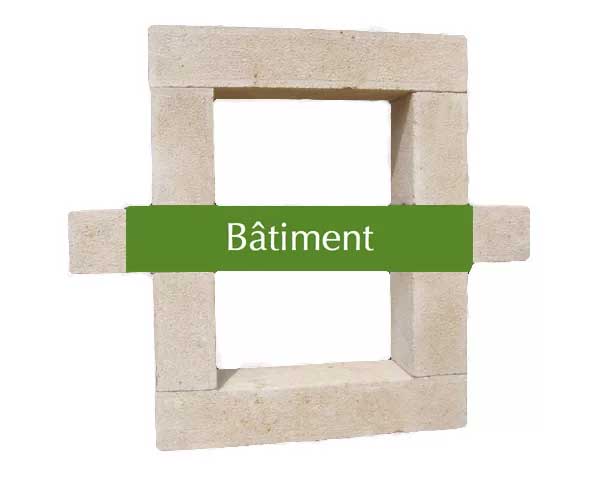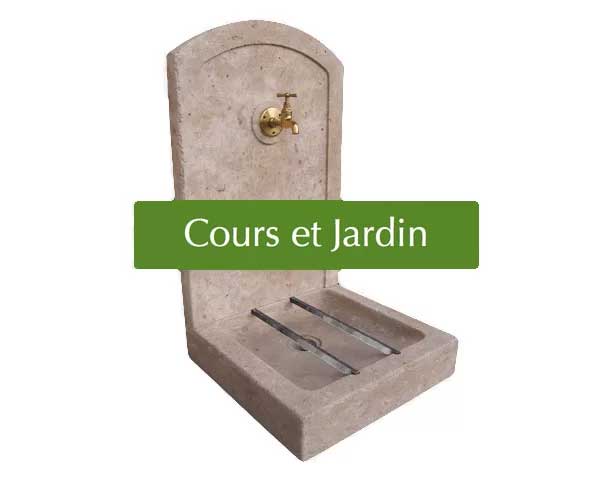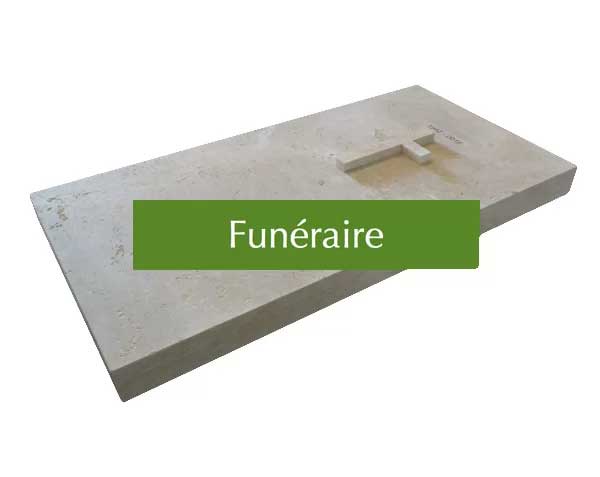The LANVIGNES limestone is the limestone we work with the most in our workshop.
This can be explained, in our opinion, by 2 main reasons :
- Color : the golden to yellow reflections of this stone are emblematic of the warm colors of Burgundy stones. Our clients often expect this type of hues when searching for a natural stone from Burgundy.
- Resistance : this limestone is one of the most resistant, especially to frost (240 freeze/thaw cycles - referred to as severe frost resistance) and is also suitable for wet areas (Kitchen and Bathroom).
Thus, there is no category of products that cannot be made from Lanvignes stone. The range of possibilities is therefore almost infinite.
THE COLORS OF THE LIMESTONE
LANVIGNES GOLDEN-YELLOW
The Lanvignes Golden-Yellow stone is our main reference in Burgundy stone with golden to yellow reflections. It is the most extracted color in the Coulmier-le-Sec quarry. For us, it is enhanced in an aged finish. We use the adjectives Golden and Yellow because the stone remains a natural material with nuances. The Lanvignes stone ranges from golden to yellow. The beauty of the stone lies in its natural and somewhat random appearance.
This stone has been used in the Château de Louveciennes and in many private estates in France and Europe.
We also work with this limestone alongside the Semond limestone in floorings and pavements to create our Saint-Genay model, which highlights all the nuances of the stones from the Châtillon-sur-Seine region (from creamy beige to golden-yellow). The Semond stone brings out the lighter shades and the Lanvignes stone the deeper tones.
LANVIGNES GOLDEN-LIGHT
In the quarry, there is a 'stratum' (which means a level or a vein depending on geological characteristics) of lighter limestone that we call Lanvignes Golden-Light. It is not part of our main stones, but we are fully capable of offering it upon request from our clients. The stone is lighter, leans less towards yellow, but is also more shell-like. It can be seen in our showroom in Comblanchien.
LANVIGNES ANTIQUAIRE
The Lanvignes Golden-Yellow stone can also be aged in our workshop to create an antique finish, which we call Lanvignes Antiquaire. The stone thus tends towards a darker color : brown with gray irregularities linked to the aging process. Ideal for creating a 'vintage butler sink' or Provencal sink, this finish can also be applied to cobblestone paving or our Old Burgundy Slabs.
Please note, for all our photos: the angle of the shot or the brightness can result in quite varied color rendering. Feel free to visit our showrooms (Burgundy, Ile de France, PACA) or to order samples.
USES OF THIS LIMESTONE
100% of our range can be made from Lanvignes Golden-Yellow stone: kitchen, bathroom, coping stones, buildings, courtyards and gardens, paving, funeral pavers... No limitation on use because it is suitable for outdoor (terrace, driveway, coping stones...) or indoor use. If we were to make a top 3 of the most manufactured products in Lanvignes in our workshop, it would be: 1-Paving 2-Pool coping stones 3-Wall copings. Note, however, that for paving in public areas, Comblanchien stone is recommended more than stones from the Châtillonnais region.
Regardless of your region, this stone is suitable for outdoor use. For a chalet in the Alps, Lanvignes stone would be suitable, and not Semond stone, for example. Also, no worries if you are in Belgium, the Netherlands, England...
TECHNICAL SPECIFICATIONS
Originating from the Châtillonnais basin (extraction site: Coulmier-le-Sec in Côte-d'Or, 15 kilometers from Châtillon-sur-Seine), Lanvignes stone is considered semi-hard (density 2190 kg/m³). Its extraction site sometimes leads it to be called Coulmier - especially in Burgundy (although the official name of the Protected Geographical Indication is indeed Lanvignes).
It is a medium-grain limestone with slight shell inclusions. Some fossil debris can be found. This is an oolitic limestone from the Jurassic period, Bathonian stage. It is 160 million years old. As mentioned before, Burgundy's natural stones were formed by sedimentation; this was the ocean floor 160 million years ago. As already mentioned, its frost resistance is 240 freeze/thaw cycles (severe frost resistance).
